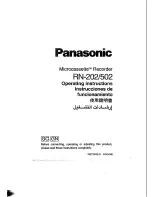
154
NexLog Recorder User Manual v2.2.0
used for bidirectional traffic with recorder clients, such as a PC with Eventide
MediaWorks that is used for playback or live monitoring.
PCAP Vlan
: Virtual Local Area Network. Enables the Packet Pre-Filtering (BPF)
for use on a VLAN, which is often used with SPAN and RSPAN setups. This
setting is used because the port/IP address information appears in a different
location in packets depending upon whether the traffic is from a VLAN or LAN.
Valid values:
unchecked
: Disabled (default), for use on a LAN.
checked
: Enabled, for use on a VLAN.
PCAP Defragment
: Enables IP defragmentation. When disabled, only the first
fragment is processed and subsequent fragments are ignored. It is usually
unnecessary to enable IP defragmentation, because voice packets are typically
small enough to avoid fragmentation, or if they are sent in multiple fragments,
the necessary data is usually in the first fragment, and the rest can be ignored.
(Fragmentation occurs when the payload results in a data packet size that is
greater than the maximum transmission unit of the sending switch.) Valid
values:
unchecked
: Disabled (default). No IP defragmentation is performed.
checked
: Enabled. IP defragmentation is performed.
Packet Filtering and Handling
Because networks carry many types of data packets that are bound for different
destinations, the recorder uses a
/packet filtering/
mechanism to detect and
isolate the desired RTP audio data packets from other data types forwarded by
the network to the recorder’s Ethernet port.
Packet Filtering
: Berkeley Packet Filtering. Specifies a source port pre-filtering
method for capturing RTP packets. Packets are pre-filtered at the NexLog
Recorder network interface. This can reduce the load on the recorder, which is
especially important in saturated high-throughput networks. BPF is a method
used to capture and filter packets from a network interface that is used in
promiscuous mode. When the NexLog Recorder network interface is in
promiscuous mode, it receives a copy of each RTP packet appearing on the port,
which is then run through a filter, so that only packets of interest are passed to
the recording application layer. This pre-filtering can reduce the traffic load on
the recorder CPU (except when no filtering is used).
The following settings can be used:
Full
: (default) Accepts traffic from all source ports identified in the
configuration by IP or MAC address or port number.
Port
: Accepts traffic from all source ports identified in the configuration
independent of IP or MAC address. This setting is used when the IP
addresses may change.
















































